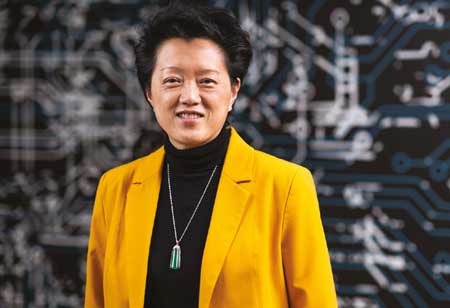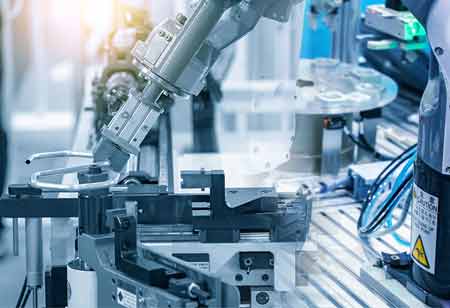THANK YOU FOR SUBSCRIBING

Heating Heat Pump: New Challenges And Opportunities For Semiconductors
Giacomo Fiocchi, Senior Director Of Electronics, Research And Innovation, Ariston Group

 Giacomo Fiocchi, Senior Director Of Electronics, Research And Innovation, Ariston Group
Giacomo Fiocchi, Senior Director Of Electronics, Research And Innovation, Ariston GroupMore than 60% of the current energy consumption for heating globally is based on fossil fuels like gas, oil, and coal. Heat pumps powered by lowemissions electricity, are the central technology in the global transition to secure sustainable heating. The heat pump market has been growing strongly in recent years, due to falling costs and strong incentives. Global heat pump sales rose by nearly 15 percent in 2021, double the average of the past decade, led by the European Union where they rose by around 35 percent. Several initiatives from the European Union, like ‘RE Power EU’, will accelerate the transition from traditional fossil fuels to renewable energy-based heating systems like heat pumps. Europe is expected to add more than 43 million heat pumps to the current 20 million installations by 2030, heating half of its buildings with renewable energy. The total heat pump stock will reach nearly 60 million units, significantly contributing to cleaner air and grid stability. This is what new forecasts from the European Heat Pump Association (EHPA), based on aggregated data collected by EHPA's national member associations in 21 European countries, reveal. Based on recent sales figures, by 2030, there will be an estimated 253 million heat pump systems installed globally.
The significant growth of these products lead the semiconductors sector to new challenges like highly efficient and affordable power components and a significant reduction of the time-to-market. We could identify three major categories of products that play a significant role in this growth: power electronics, control electronics and IoT devices.
The heat pump itself consists of a compressor, which moves a refrigerant through a refrigeration cycle, and a heat exchanger, which extracts heat from the source. The power electronics modulates the compressor rotational speed by acting on the frequency of the motor power supply to control the compressor capacity. The power semiconductors are the core of the power electronics with transistors and diodes able to switch hundreds of amps and hundreds of volts in microseconds. Most common technology are Insulated-Gate Bipolar Transistors IGBTs) and Metal-Oxide-Semiconductor Field Effect Transistor (MOSFETs) but looking to the common challenges like power density and efficiency increase it makes sense to monitor the evolution driven from the automotive for the EV’s. All major players are trying to get as much power in the smallest space without affecting the thermal performances. SiC and of GaN are playing a significant role offering high switching speeds, reduced switching losses, higher efficiency, and ruggedness. In term of sensors most of the compressors adopt sensorless motor drives ensuring lower cost, higher reliability, minimized hardware complexity, good noise immunity and reduced maintenance.
“Control electronics lead the functional and safety behavior of the heat pumps, ensuring hi-level performances of the machine and leading the energy management of a more complex domestic system”
Control electronics lead the functional and safety behavior of the heat pumps, ensuring hi-level performances of the machine and leading the energy management of a more complex domestic system. Interoperability and IoT becomes at the same time fundamental aspects to be considered for any smart home device able to collect analyze and transmit data. Micro controller units are most common components for embedded systems supervising all the peripherals and implementing all the logics. Lot of attention has to be given to limit the MCU power consumption without compromising the performances; this become crucial for IoT devices that need to operate for long periods of time sometimes with limited power source. In order to achieve this goal different solution can be adopted: lowering clock frequencies, dynamic scaling, and clock gating, individual control to peripherals. If on one side power, consumption is the most important aspect on the other side another trend relates MCU performances with increased powerful processors and memory sizes. For HVAC solutions MCU’s will have to lead complex HMI with complex graphics, dealing with analog processing and hi-precision controls; these trends reduce the gap between MCU’s and MPU’s focusing the decision on whether to have an operating system or not. If today most of the MCU’s are based on single processor and just 20% are based on dual processor the expectation is that in the future multiprocessors solutions will be more present especially for the electronics that lead the home energy demand. In addition, the processors frequency will increase in the next three to five years including solutions able to reach frequencies till 1Ghz with also increased Flash, RAM memory resources and external memories interfaces. The presence of HW accelerators is becoming very common in order to lead wide screen (eg. 7”) with hi-resolution and graphics dynamics but also the numbers of communication interfaces is increasing. Traditional UART, USART and SPI are often coupled with CAN, CAN FD, USB and Ethernets interfaces in order to ensure maximum level of interoperability across different products and networks. We cannot forget to mention the Artificial Intelligence where an important trend is related to the edge solutions in order to avoid latencies, reduce data transmission and increase the accuracy. Some AI logics can already be handled from the MCU with limited resource consumption and in some cases an embedded neural processing units can be integrated.
Read Also






















ON THE DECK
Piezoelectric APAC 2024